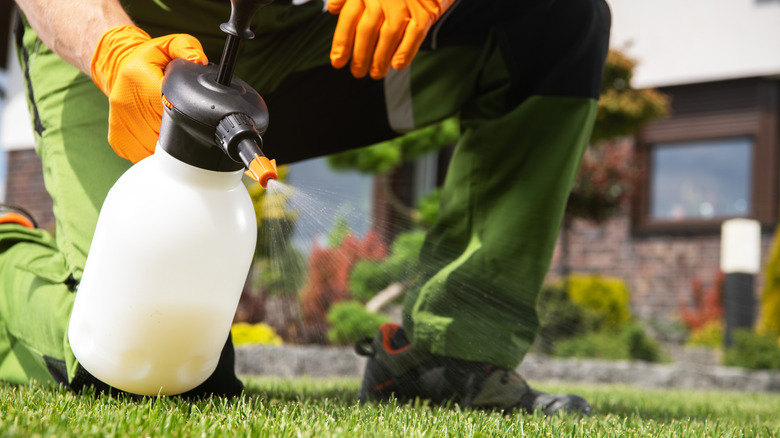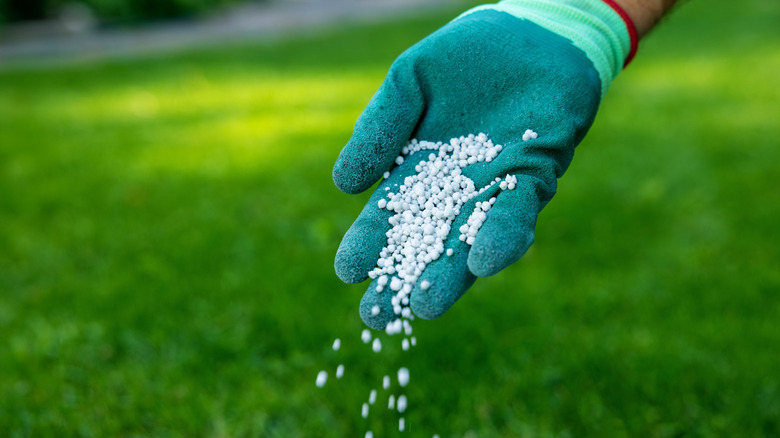Is Sugar The Secret To A Healthier Lawn?
We may receive a commission on purchases made from links.
Everyone loves having a healthy yard. Getting and maintaining one can be a bit challenging, though. The key to a lush, green lawn lies in a balanced mix of soil maintenance, including aeration, fertilization, mowing, and weed control. When it comes to fertilization and weed control, there are plenty of commercial products out there, but are there any good DIY alternatives? According to some, sugar is the best fertilizer for your lawn.
The question is, does this sweet pantry staple work, and if so, how well? Healthy soil is biologically balanced, with at least half of its biomass consisting of bacteria. Bacteria thrive on sugars and starches, and the idea behind sugaring your lawn is that it will feed those bacteria and promote the growth of grass. In terms of weed control, the idea is that sugar will cause nitrogen levels to drop enough to harm weeds and not the lawn.
While there isn't much scientific evidence to support the use of sugar as a fertilizer or weed control, there have been studies that support its use on crops to attract beneficial insects and to activate plant defense signaling. The late PBS host and gardener Jerry Baker even touted a lawn care tonic that includes a bit of corn syrup and beer in the mix. While some home gardeners swear by its restorative powers, many others within the gardening community are skeptical.
Using sugar for your lawn and other considerations
If you're interested in giving this little-known lawn fertilization hack a try, you can use a fertilizer spreader to lightly sprinkle your lawn with sugar, about one pound of sugar for every ten square feet. Spray your lawn with water afterwards to dissolve the sugar. You can also try a mix of molasses and water as a spray-on solution to help promote a healthy microbial environment with a slightly less sticky mess. Use 3 ounces of blackstrap molasses for every 1 1/2 gallons of water. Using Jerry Baker's old school method for a greener lawn, you can make the All Green Tonic with a cup of beer, a cup of ammonia, and a half a cup each of liquid lawn fertilizer, dish soap, and corn syrup. You'll spray this mixture every three weeks.
Some of the main concerns voiced by opponents of the sugar method is that it doesn't always produce a noticeable difference in lawn health and weed reduction. It might also attract a variety of pests. If you want to try a sugar method for your lawn, it's worth being aware of these issues.
Of course, a good commercial lawn fertilizer will provide the necessary nutrients for a thriving lawn without the potential for a sticky, pest-attracting mess. Scott's Turf Builder Lawn Food works for all grass types. A 12 1/2 pound bag covers at least 5,000 square feet. To get rid of weeds in your lawn and refresh the soil in one step, you can try a two-in-one product like Scott's Turf Builder Weed & Feed.

